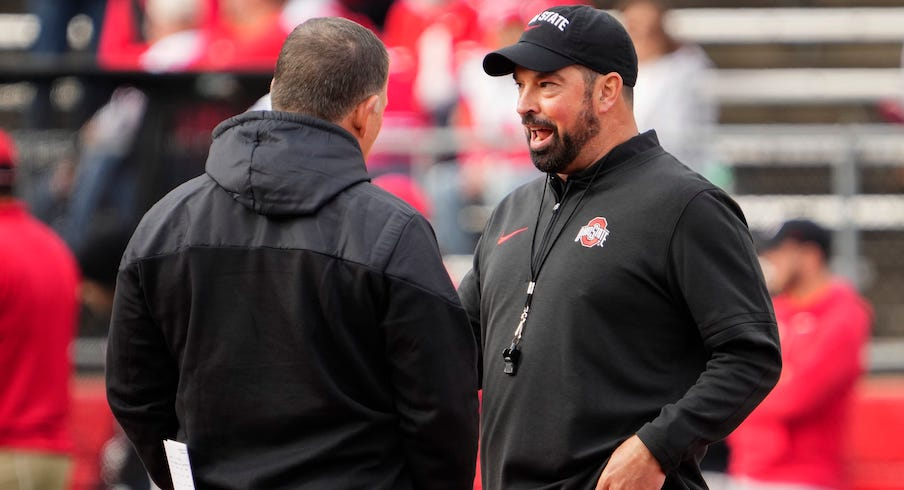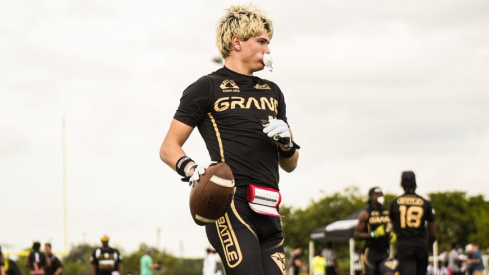In its response to the Big Ten’s notice of allegations earlier this week, Michigan argued that its sign-stealing scheme orchestrated by Connor Stalions wasn’t necessarily any worse than the sign-stealing practices deployed by other schools around the conference.
Big Ten commissioner Tony Petitti strongly rejected that notion in his official notice of disciplinary action to Michigan on Friday, when the conference announced it was suspending Jim Harbaugh from coaching in games for the remainder of the regular season.
In Michigan’s formal response that it submitted to the Big Ten on Wednesday, Michigan athletic director Warde Manuel wrote that “the Conference should act cautiously when setting precedent given the reality that in-person scouting, collusion among opponents, and other questionable practices may well be far more prevalent than believed.” Manuel cited a report that indicated Ohio State and Rutgers shared signals with Purdue before the 2022 Big Ten Championship Game — one Ryan Day denied when asked about it on Wednesday. Michigan also shared a document that it said it received from a former Ohio State coach that showed how Ohio State decoded Michigan’s signals in 2018, arguing that its in-person scouting did not provide Michigan with a significant competitive advantage.
In Michigan AD Warde Manuels Nov. 8 response to the Big Ten, he attached a document sent from a former Ohio State coach to a former Michigan coach showing that OSU had extensively decoded Michigan's defensive coordinator's signals, apparently based on broadcast footage
— Matt Fortuna (@Matt_Fortuna) November 10, 2023
1/2: pic.twitter.com/MPhuAy0juW
“If Stalions coordinating with third parties to perform in-person scouting on opponents violates the scouting rule, then it appears that other teams may also be violating the rule by employing each others' employees to scout their opponents in person,” Manuel wrote.
That said, there is no NCAA rule against decoding signals based on broadcast footage or All-22 film, nor is there an NCAA rule against coaching staff sharing signals with one another. While the NCAA told the Big Ten it “knew and could prove” Michigan’s scheme violated NCAA rules by scouting opponents in-person and filming opponents for the purpose of stealing their signals, Petitti wrote that the Big Ten “has not received any information that any other member schools engaged in impermissible advance in-person scouting.”
“The Conference is unmoved by the University’s attempt to downplay its impermissible conduct by asserting that other Conference members may have engaged in sign decoding. As the University readily admits in its response, it does not know the exact methods that it alleges other teams used to decode its own signs,” Petitti wrote. “The Conference has not received any information that any other member schools engaged in impermissible advance in-person scouting, let alone a scheme of the size and scale like the one at issue here. The Conference is unaware of any active NCAA investigations into impermissible advance scouting involving other members of the Conference.
“Should the Conference become aware of such impermissible conduct, it will take appropriate action. However, the Conference vehemently rejects any defense by the University or any other Conference member that cheating is acceptable because other teams do it too.”
Day has denied any wrongdoing by Ohio State, telling 10TV’s Dave Holmes earlier this week that “our guys in this program do things the right way.” Asked specifically about the report that Ohio State shared signals with Purdue on Wednesday, Day said “nobody here did any of that.”
“We went through and made sure we asked all the questions and got our compliance people involved. None of that came back at all. I can answer very strongly that that did not happen,” Day said.
Rutgers coach Greg Schiano also denied wrongdoing by his program when asked about the same report earlier this week.
“I’m very confident in the way we handle our business,” Schiano said. “... Quite frankly, I’m a little bit ticked off that we have to talk about this. This isn’t our problem.”


